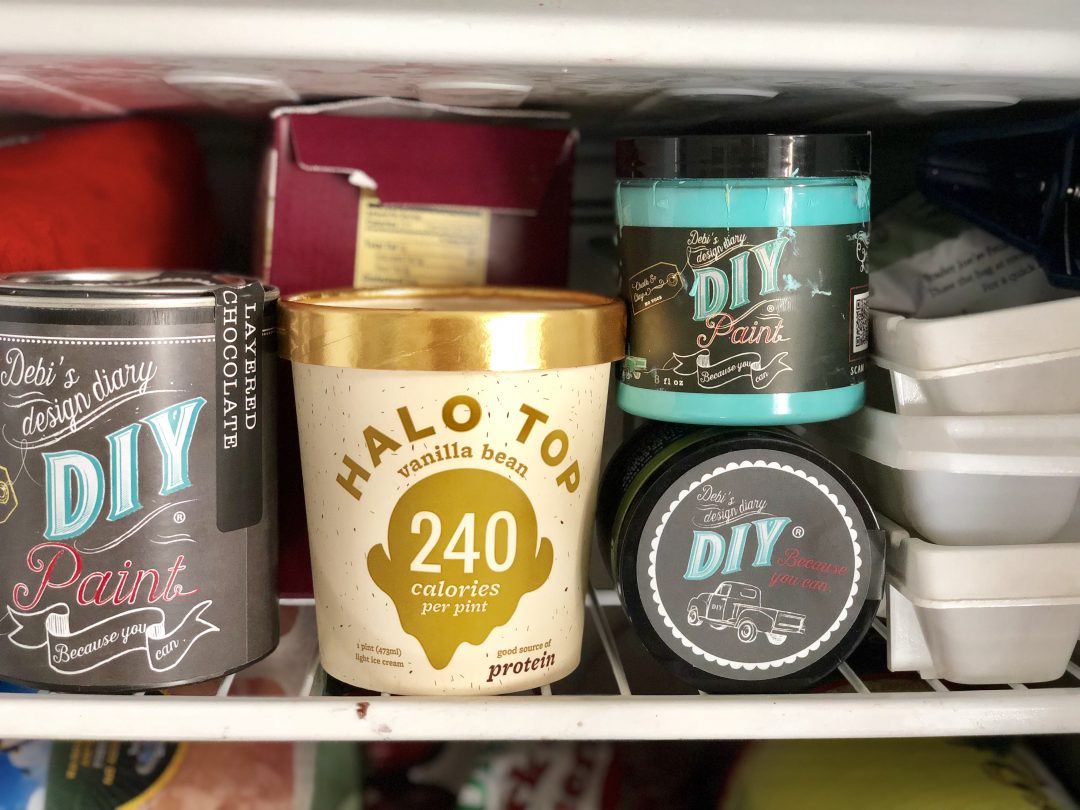The sudden realization of frozen paint can be a real downer. Whether it’s a fresh can from the hardware store or a half-used one forgotten in the cold, the thought of discarding perfectly good paint is a frustrating pill to swallow. In this comprehensive guide, we’ll delve into the world of frozen paint, offering practical solutions to revive its liquid state and restore its original vibrancy.

Image: debisdesigndiary.com
Before we embark on this paint-saving journey, let’s first understand what happens when paint freezes. As the temperature drops below freezing point, water in latex paints expands, creating ice crystals that break down the paint’s structure. These crystals alter the paint’s composition and consistency, making it unusable directly out of the can.
Thaw Gently
The Slow and Steady Approach
The most effective method of thawing frozen paint is by patience and a controlled approach. Place the paint can in a warm room and let it acclimate to the temperature gradually. The ideal temperature range for thawing is between 60-80°F (15-27°C). Avoid exposing the paint to direct heat sources such as radiators or heat guns, as rapid thawing can further damage its composition.
Depending on the severity of freezing, it may take several hours or even a few days for the paint to thaw completely. Stir the paint occasionally as it warms to promote an even thawing process and prevent lumps from forming. If you notice any chunks or hardened portions, let them soften further before stirring vigorously.
Tips to Avoid Paint Freezing

Image: www.youtube.com
Prevention is Key
To avoid frozen paint altogether, follow these preventive measures:
- Store paint properly: Keep paint cans in a temperature-controlled environment where temperatures remain above freezing.
- Protect from drafts: Place paint cans away from drafty areas or windows.
- Monitor temperature: If temperatures are expected to drop, temporarily move paint cans to a warmer location.
- Use thermal blankets: Insulate outdoor paint cans using thermal blankets or tarps to prevent freezing.
Expert Advice and Fixes
Beyond the gentle thawing method, there are a few additional tips and expert solutions to revive frozen paint:
- Adding Water: If the paint is slightly frozen but still semi-liquid, try adding a small amount of water and stir thoroughly. The water helps break down the ice crystals and restore the paint’s consistency.
- Color Corrective: In case of frozen tinted paint, adding a small amount of white paint can help reduce color distortion caused by ice crystal formation.
- Stirring with Dilution: For severely frozen paint, use a power drill or mixer to stir while gradually adding water. This forceful agitation helps dissolve the ice crystals and restore the paint’s fluidity.
Frequently Asked Questions
Q: How long does it take frozen paint to thaw?
A: Thawing time varies depending on the freezing severity. It can take several hours to several days.
Q: Is it possible to revive completely frozen paint?
A: Yes, while severe freezing may affect paint quality, it’s often possible to revive frozen paint by following the recommended thawing and restoration techniques.
Q: Do heating lamps or hair dryers help thaw paint?
A: Direct heat sources can further damage frozen paint. Gradual room-temperature thawing is recommended for optimal results.
How To Fix Frozen Paint
Conclusion
Dealing with frozen paint can be an annoying setback, but armed with the right knowledge and techniques, reviving your paint to its original form is entirely possible. By adhering to the gentle thawing approach and incorporating expert tips and precautions, you can restore your frozen paint to its liquid glory, saving both time and money. Remember these methods the next time cold temperatures threaten your painting projects. Now, tell us, have you ever encountered frozen paint, and how did you deal with it? Share your experiences and insights in the comments below.